|
Part of the reason for going to Calvinia and spending time there was Chris’s excellent suggestion that we use the town as a base for venturing out into the region. Actually, once you look around the place, it’s a bit like being a child in a sweetie shop. So much to see and so little time to see it. Cederberg and San Art 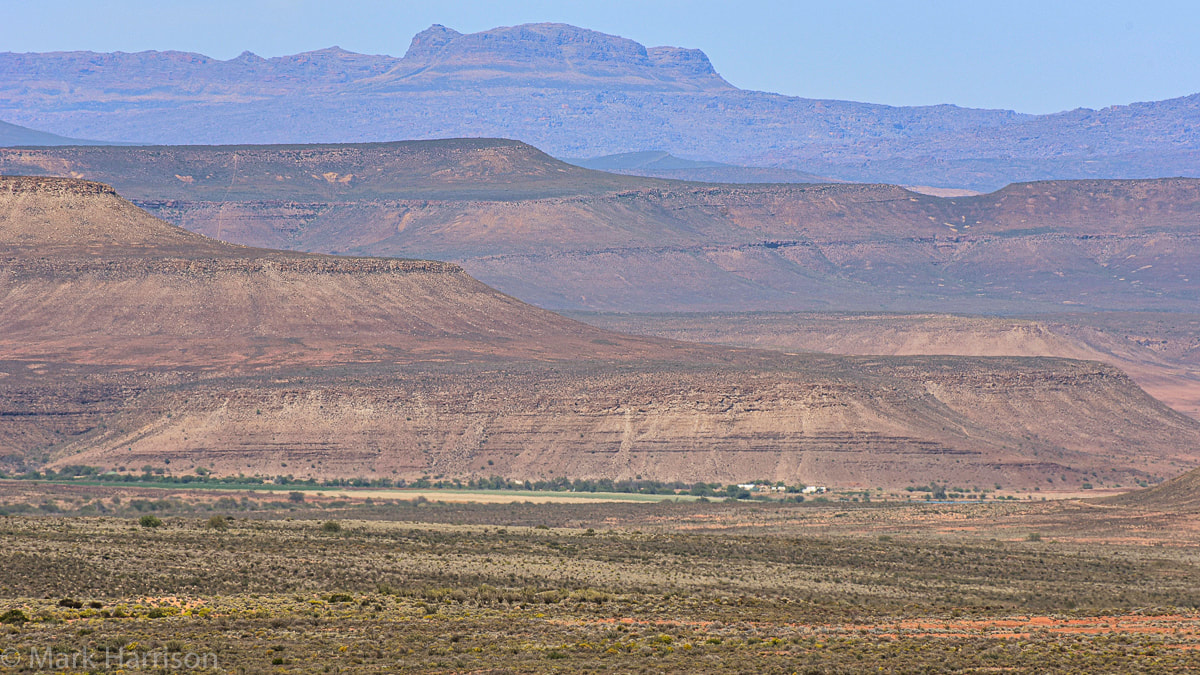 Serried ranks of the Cederberg between Calvinia and Clanwilliam. At this point I need to re-introduce Viv, our hostess in Muizenberg; she also happened to be a tour guide and archaeologist specialising in the Cederberg. She’d been on at me about some San paintings near Clanwilliam. It turns out we have to go to the Traveller’s Rest on the R364 from Calvinia. “You can’t miss it, it’s just after the bridge,” Viv instructs. OK? A little further investigation reveals that the bridge is over the Brandewyn (er, Brandy) River. Who could refuse? Of course, not even South Africa has rivers that actually run with distilled fermented grape juice. They do, however, have many rivers with brandy coloured water. This is caused by the presence of dissolved organic carbon compounds that are largely produced by plants. The triumvirate was unanimous, especially as a walk was involved at our destination. The journey was 120 km of slightly dodgy gravel road compensated for by magnificent Cederberg mountain ranges. Driving, by yours truly, was somewhat complicated by what had started as a desultory Microsoft vs. Google argument. Note to self: never argue with a smart city lawyer with instant recall of every document ever written about Bill Gates. Why do I get drawn into these things while negotiating potholes and skidding to a halt near a large, brown tourist road-sign in the middle of nowhere proclaiming an “Englishman’s Grave”? 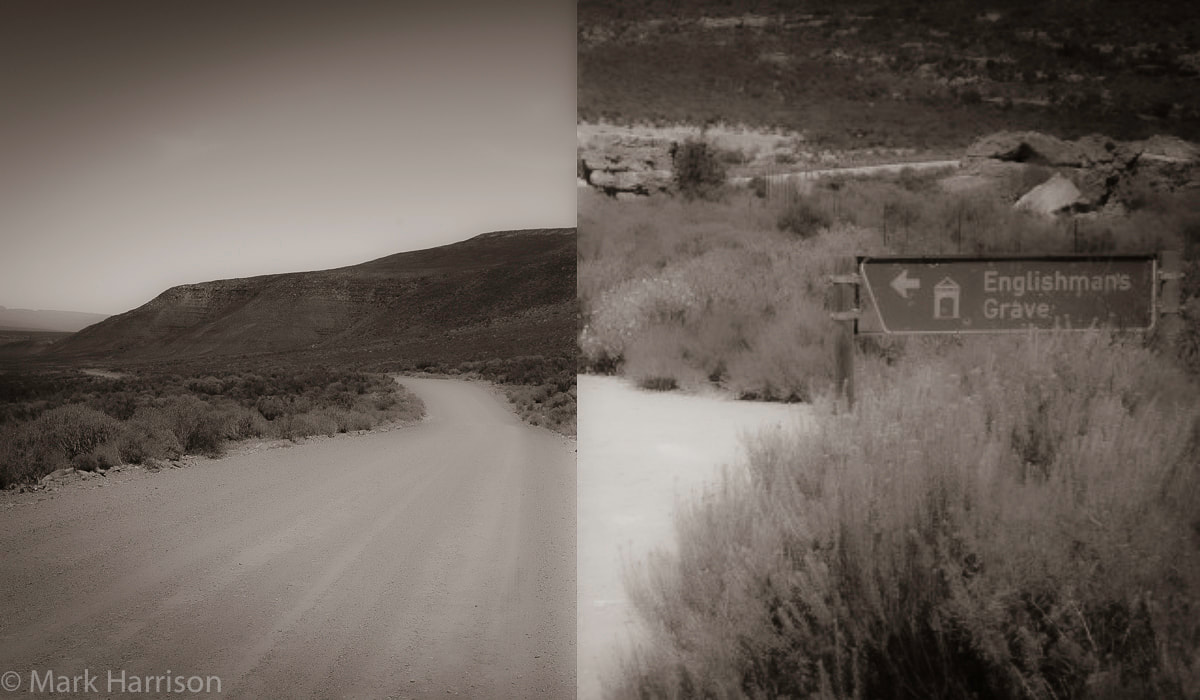 Another long dusty road punctuated by Bill Gates and an Englishman's Grave. The Victorian grave revealed that Lieutenant Graham Vinicombe Winchester Clowes had been killed in action near this spot on 30th January 1901. According to a bit of subsequent research, Clowes’ mother had had the memorial erected after the Boer War and had probably spent more than a month travelling from England to do so. Still, he goes down in history where so many didn’t. We did eventually get to the Traveller’s Rest, though and were overcome by the extraordinariness of the site. Extraordinary for me (Viv might disagree) in that it is la San city spread over several kilometres and 9 caves. The artists have also deployed dyes of several hues (purple for e.g.) that I hadn’t seen before. With the extent of it, one can only try to imagine the sociability of the San people who lived and painted there going back 80 centuries – the paintings are believed to be between 800 and 8,000 years old.  The magnificent Cederberg Purple paintings A bonus was that the caves are accessed via the “Sevilla Rock Art Trail”, a most attractive walk in the mini-gorge created by the Brandewyn. The surrounding cliffs allowed the local baboons to monitor one’s progress from a safe elevation in the cliffs above the caves. There was a little chap up there who had a certain fondness for fondling himself that was a tad disquieting! 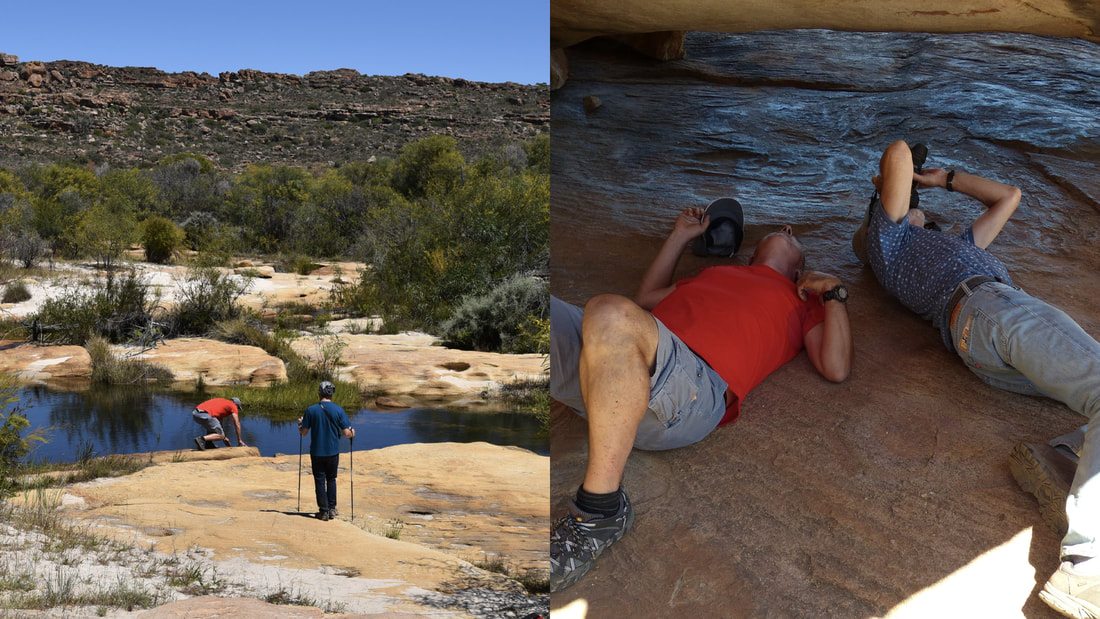 Fed and Richard speculate on the Brandewyn before we scramble under huge boulders to discover hidden gems The caves themselves were all pretty well hidden. How do people find these things after 800 years? “After 10 years working in that area, you get to be able to sniff them out,” Viv told me somewhat mysteriously, after I'd returned to the UK and wanted to check some details via WhatsApp.. Windmills and a Kokerboom forest Last day in Calvinia and the three amigos were a smidgeon less unanimous. Being evidently the most dissolute of the party, I had visions of Doppies Bar in Williston and the photographic cornucopia that beckoned in the “mall” there. Readers will have to visit karoospace.co.za to find out what that’s like. Instead, a worthier expedition was proposed 85 km in the opposite direction: a 17.9 km walk over extremely rugged countryside in the Oorlogskloof Nature Reserve, apparently so named because skirmishes between the Boer and Khoi people took place there in 1739. The promise of a windmill museum in Loeriesfontein wasn’t going to deter the protagonists. So, nursing a slightly gammy knee that I was trying to preserve for the bike race in Durban later in the month, I parted company with Richard and Fed. I drove them to Oorlogskloof before heading up the road to Loeriesfontein with a list of my own: the museum, a waterfall (a “must see” according to Sonja), a Kokerboom woud (forest) and maybe a visit to the Hantam National Botanical Gardens at Nieuwoudtville. 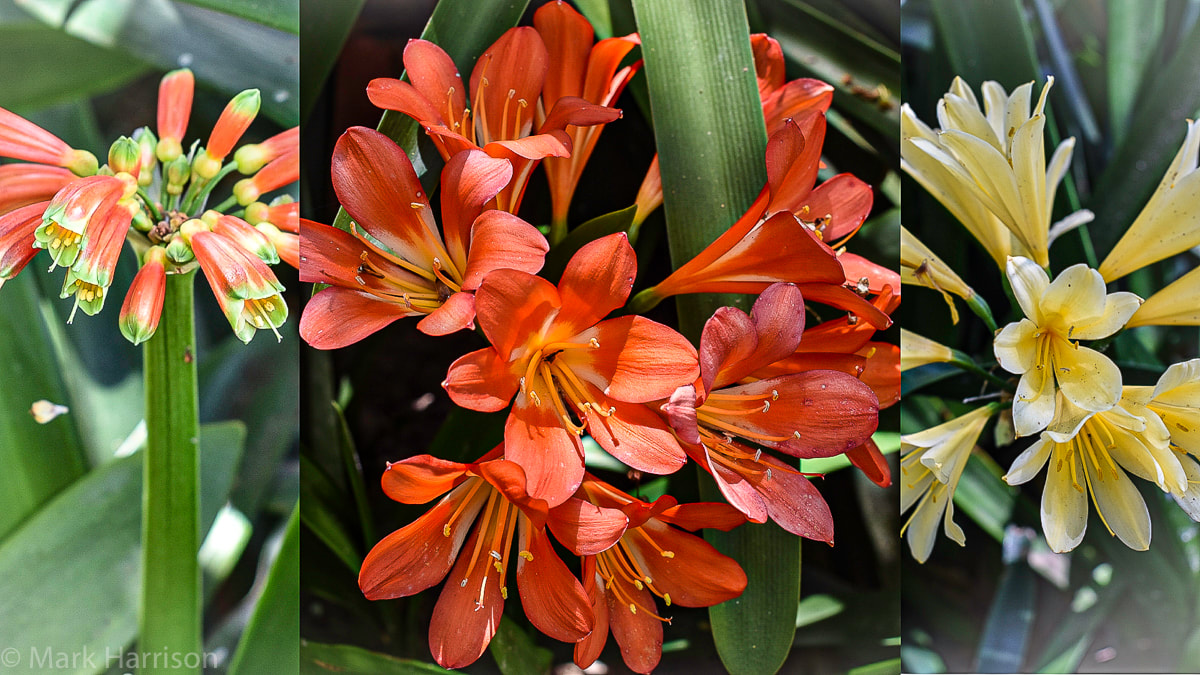 Lunch amongst the Clivias held out an invitation of things to come The last of these because the town proclaims itself as “the bulb and flower capital of the world”. The drive from Nieuwoudtville to Loeriesfontein is essential for anyone who loves their road trips as much as I do. The juxtaposition of desert, mountains and mysterious gorges is particularly atmospheric along this stretch. The terrain seems to be a unique mixture of what appear to be volcanic outcrops, soaring bluffs and a type of scrubby terrain I hadn’t seen elsewhere. The first stop was the waterfall, just 7 km from Nieuwoudtville. I wasn’t particularly optimistic as, to get to it, you have to cross the Doring River first. As the river is the falls’ source of water I was disappointed to find, as I negotiated the bridge, that the river was apparently dry. 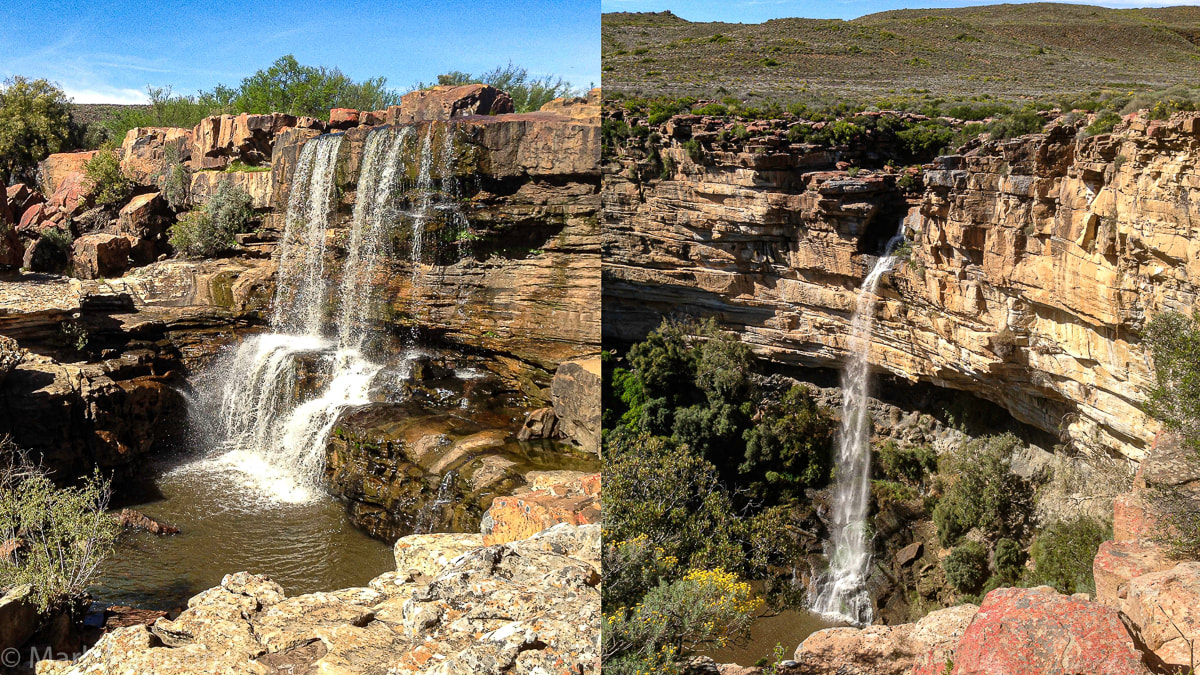 Where did the water come from? Upper and lower falls at Nieuwoudville. Imagine my amazement, then, when finally getting to the falls, less than a kilometre away, there was a steady stream pouring over the top of both drops that make up the spectacle. Things are seldom what they seem in the Karoo. That is a good thing. 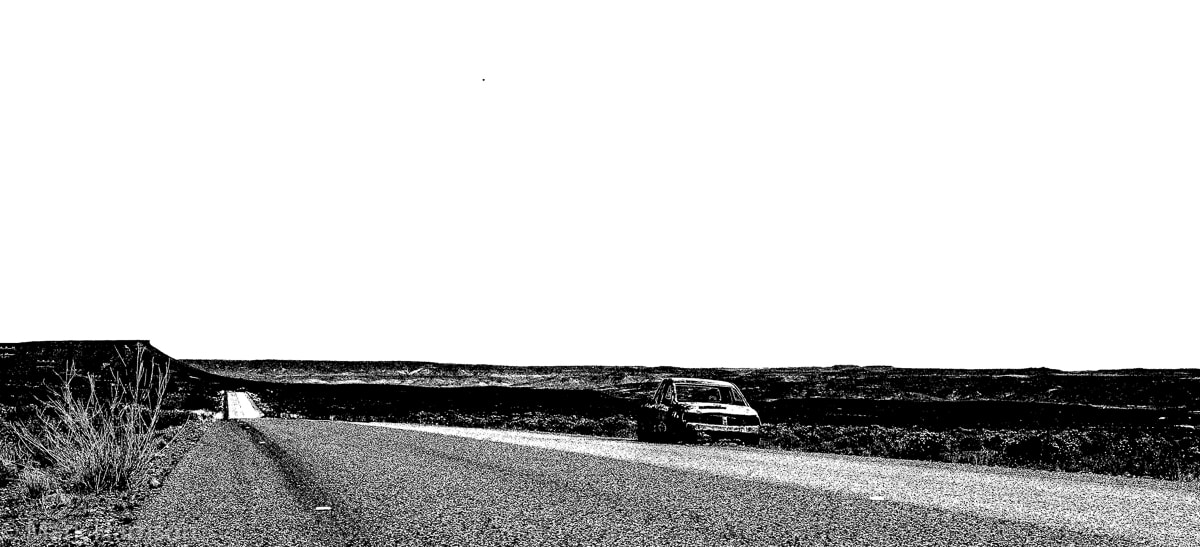 In the middle of nowhere on the road to Loeriesfontein can have a bit of frisson. Next stop was the Kokerboom forest. If you are as much into Kokerbome as I am, this was breathtakingly vast and eerie. These forests are not like our Oak woods in the UK with lush green and deep shade. Go there expecting that and you will be sorely disappointed. This, after all, is a desert and these prehistoric monsters are well spaced and spread out over valleys, the sides of huge bluffs and along the top of every skyline. They made the hairs on my arms stand up. Happily, the trees this far South also have green foliage, such as it is. I think I took about 1,356,261 photos, none of which did the place justice. 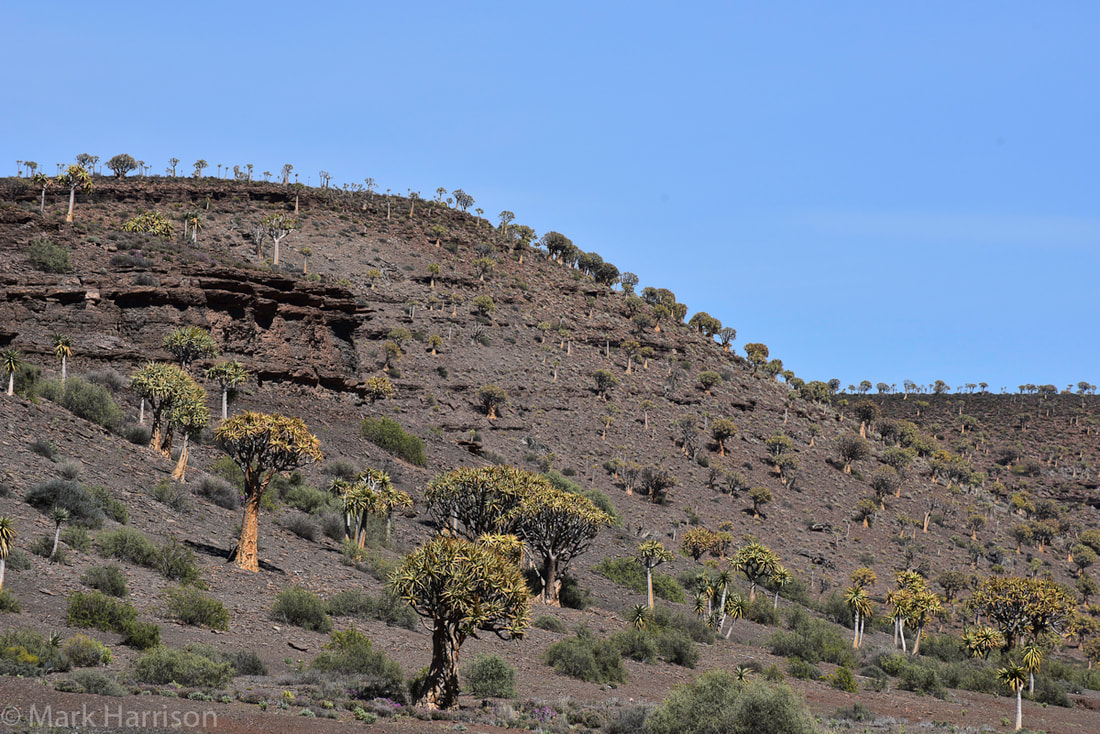 Spaced out Kokerbome 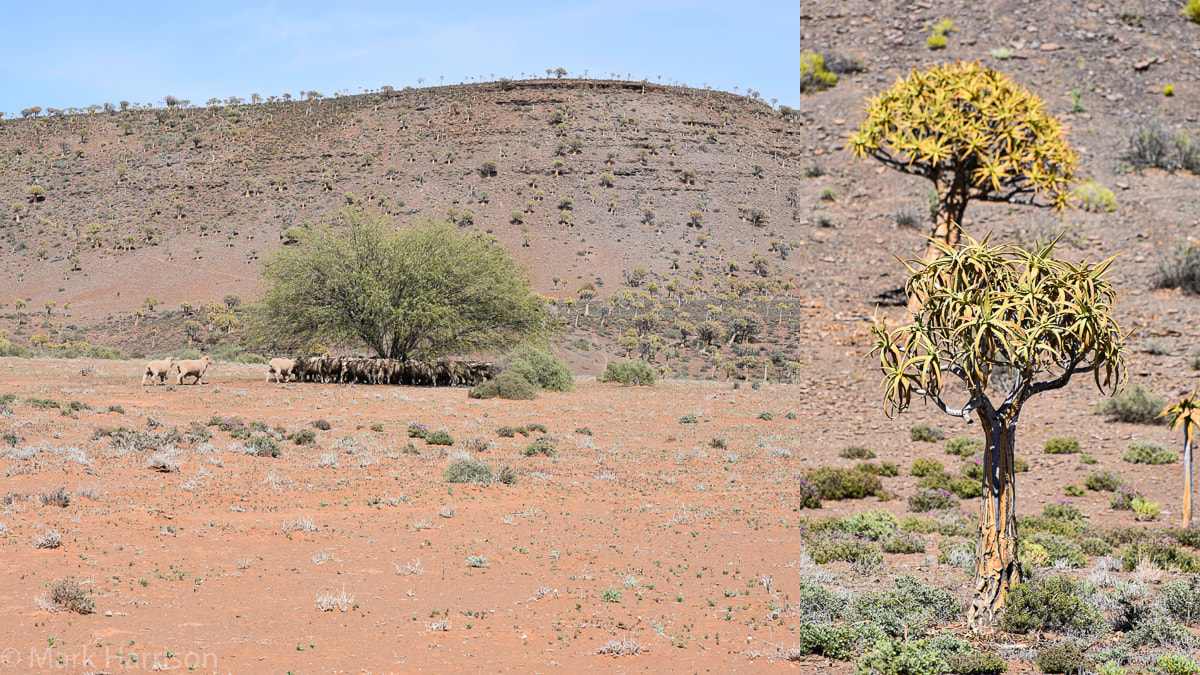 After tarrying for more than an hour, absorbing the atmosphere, frightening the local sheep by jumping a fence to chase my hat (honest guv), which had been whipped off by a gust, and looking for the perfect specimen TREE, it was off to see some windmills. Via an excellent coffee milkshake on the verandah of a local Loeriesfontein establishment, I ended up at the Fred Turner museum. Just the fact that this collection of wind pumps exists where it does is a phenomenon in itself. I loved the quirkery of it and I’m not even a train spotter. There was no one about to tell me more about it so I wandered around absorbing the atmosphere and took more photographs.  A sample of Fred Turner's windmills. In the Karoo you are really in the gamadooloos if you can do a 360 and not see a windpomp. There was nothing left but to turn the car around and head back to Nieuwoudtville. The bulb and flower capital of the world beckoned. Along the road it was necessary to stop and take random photographs. The space was just like that.
After a pleasant al fresco lunch (Fed and Richard had texted me to say they were running late clambering through Oorlogskloof) I set off to see some bulbs and flowers. Here’s a digression: I once saw an excellent documentary, “The Leader, His Driver and the Driver's Wife”. It was quite a long production about renowned film maker Nick Broomfield’s attempts to interview Eugène Terre'Blanche. Actually, it was more about Nick not getting the interview. And so it was with the bulbs and flowers. I headed out to the Botanical Gardens. At the gate there was sign saying it would be R20 to get in. The whole place seemed deserted but I found the seemingly unmanned office. After a short wait, a most charming lady appeared, apologising profusely and asking what she could do for me. I said I had come to pay my R20. “I couldn’t possibly charge you an entrance fee,” she replied. “There’s nothing here.” She was absolutely correct and it was my fault entirely. I had been warned that I needed to be there in late August and it was now early October. I explained that I had an hour to kill before negotiating my way back to Oorlogskloof and she was at great pains to give me a walk that would do just that. Very pleasant it was too, although not a flower in sight. More Broomfield moments coming soon ...
2 Comments
Tim tindall
23/6/2020 09:27:39 pm
OMG Mark, the first pic on this blog is the screensaver on my notebook taken on our trip in 2013... plus some of the others on this blog. I will send to you tomorrow. What a lovely trip and I am so pleased and proud of you that you follow your heritage so avidly! A real mensch...Tim T
Reply
24/6/2020 02:58:28 pm
Thank you Tim. I remember chatting to you about that area and how much you'd enjoyed your travels there. It would be fab to do it agani one day ;-)
Reply
Leave a Reply. |
AuthorMark Harrison - making travelling an adventure Archives
April 2024
Categories |


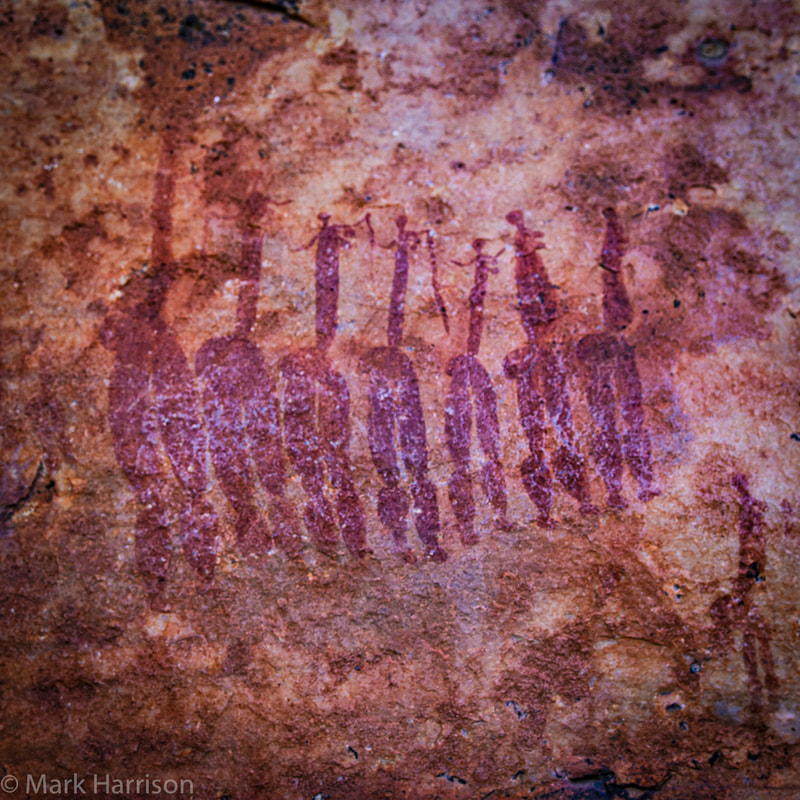

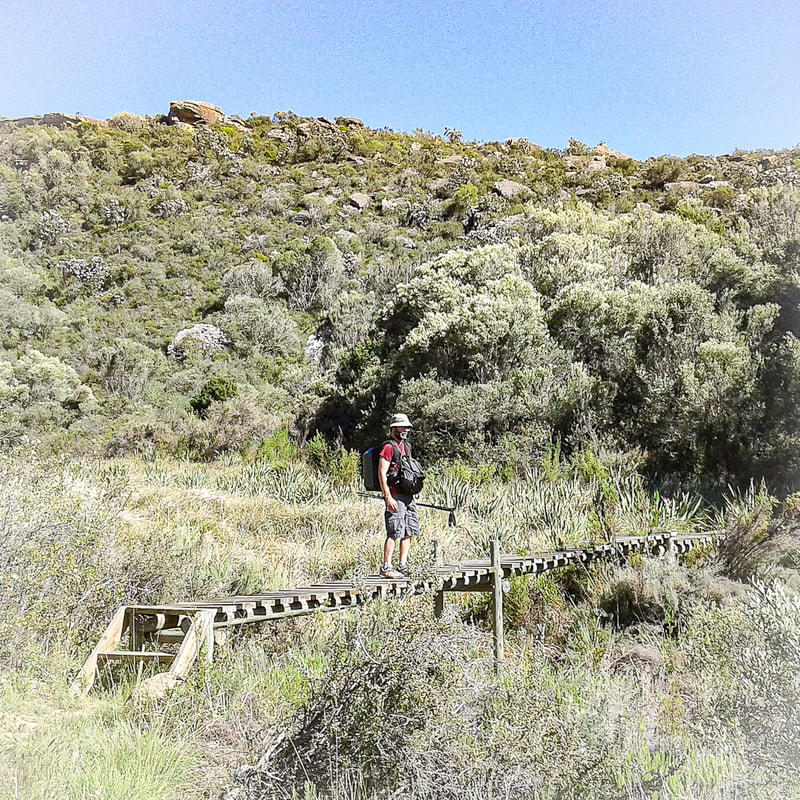
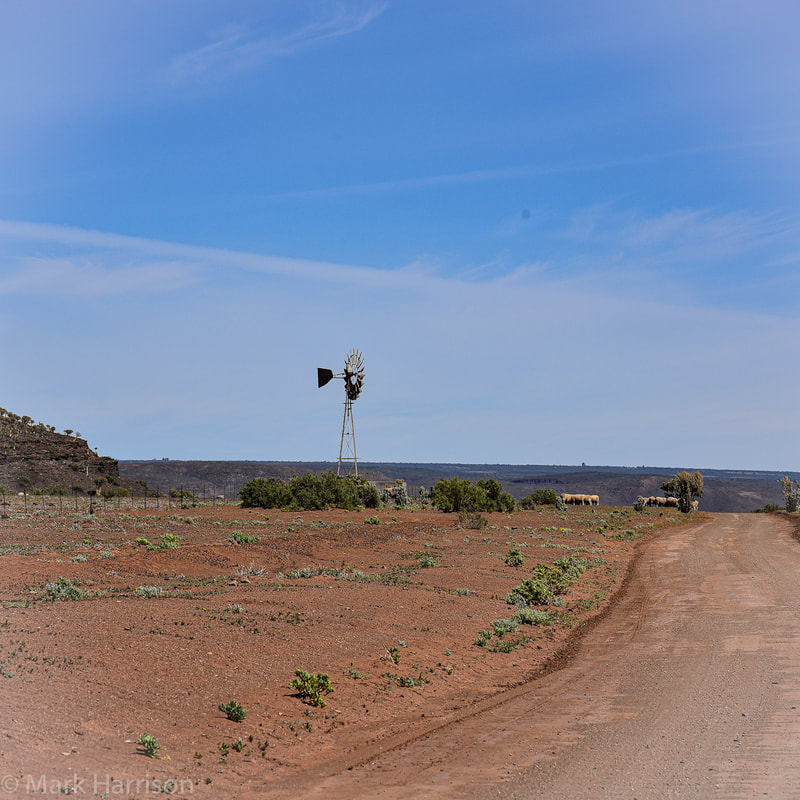
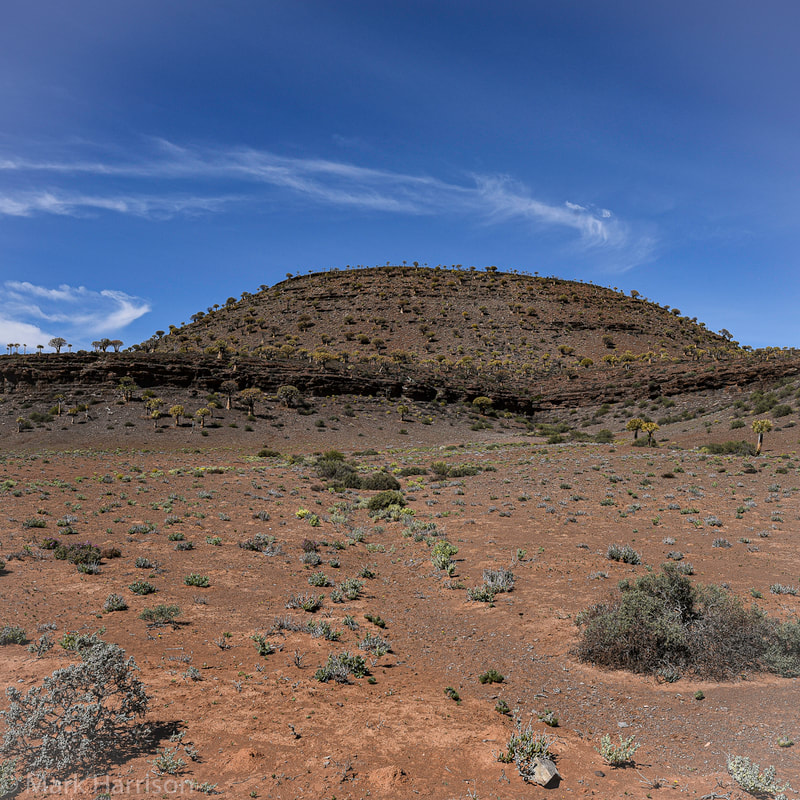
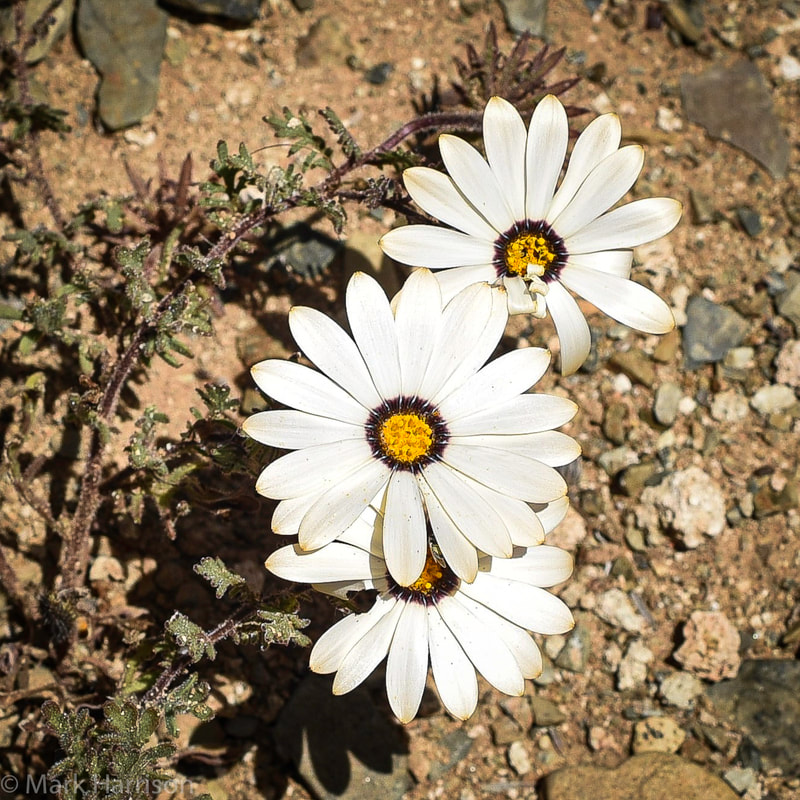
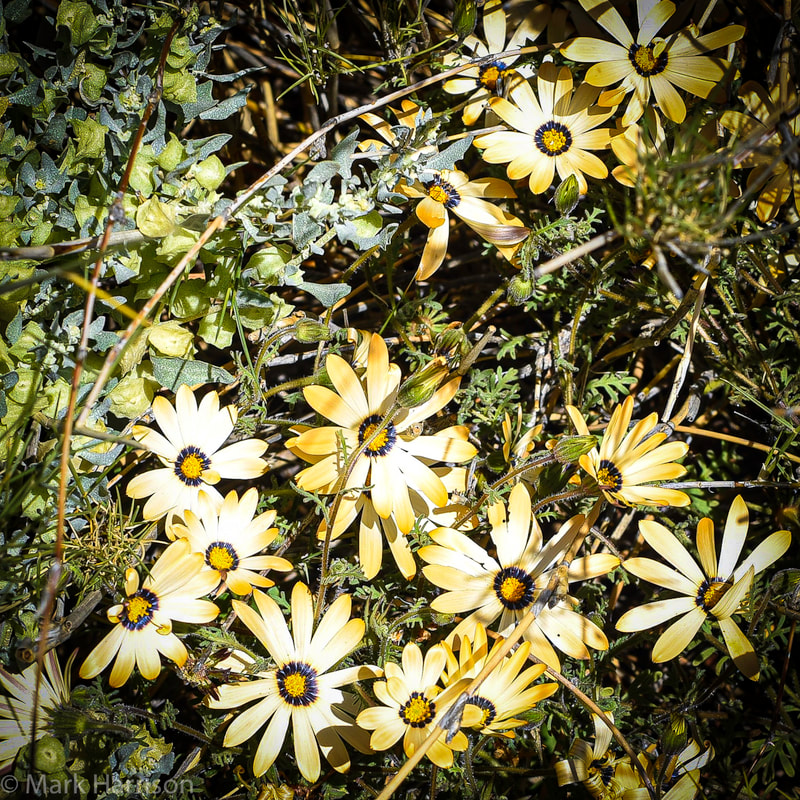
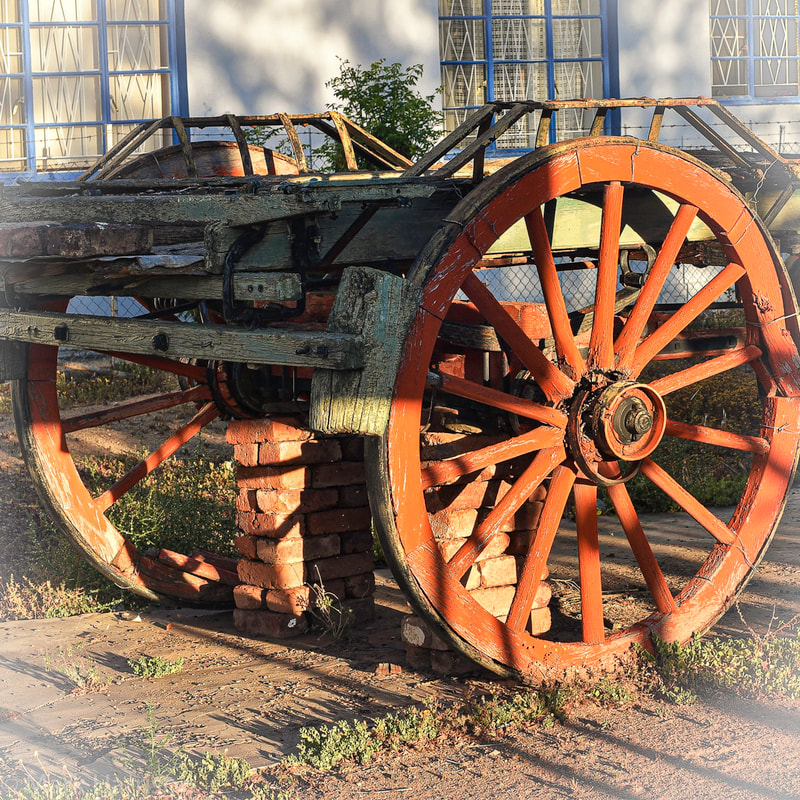
 RSS Feed
RSS Feed